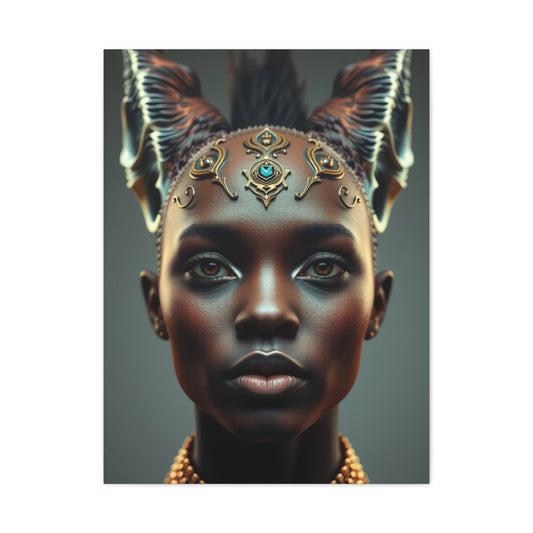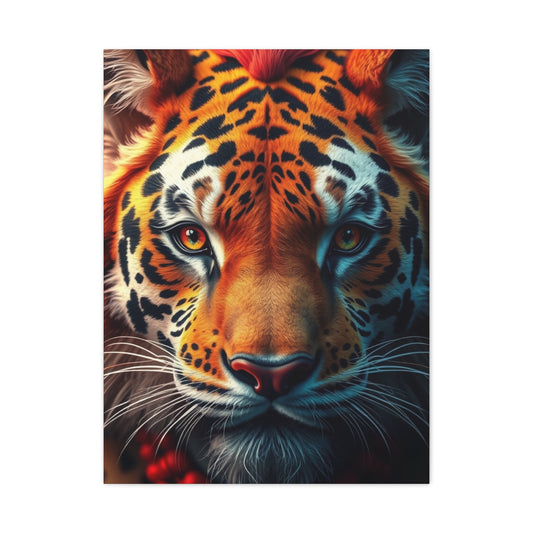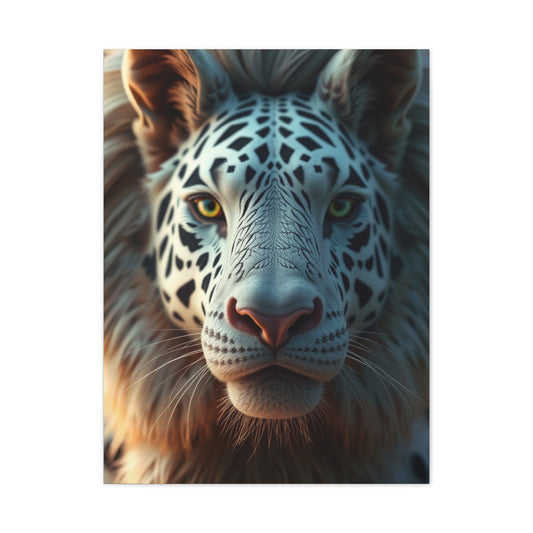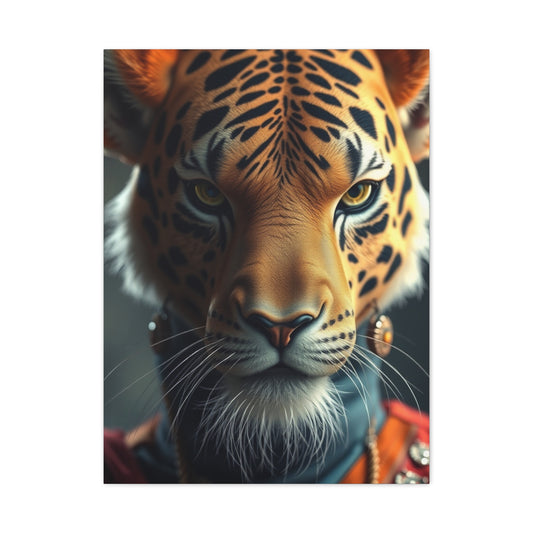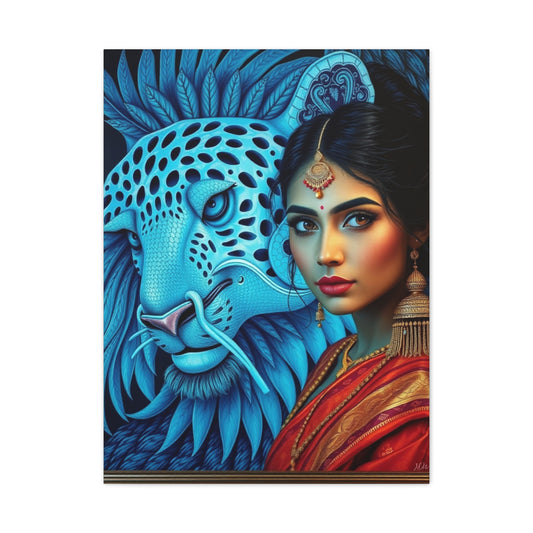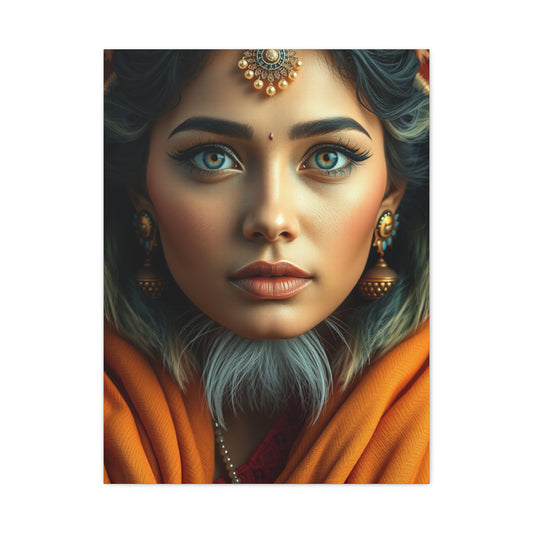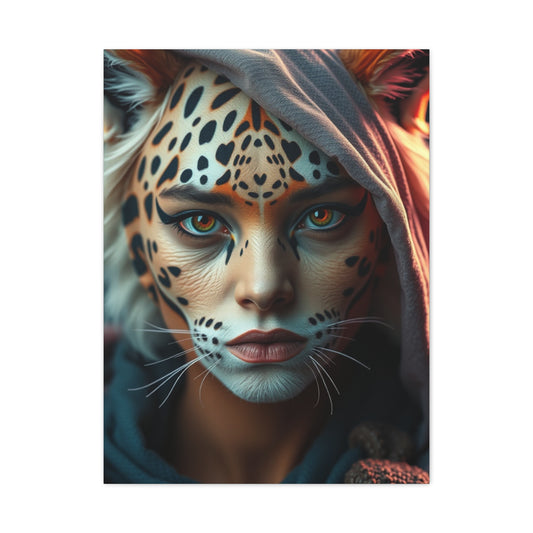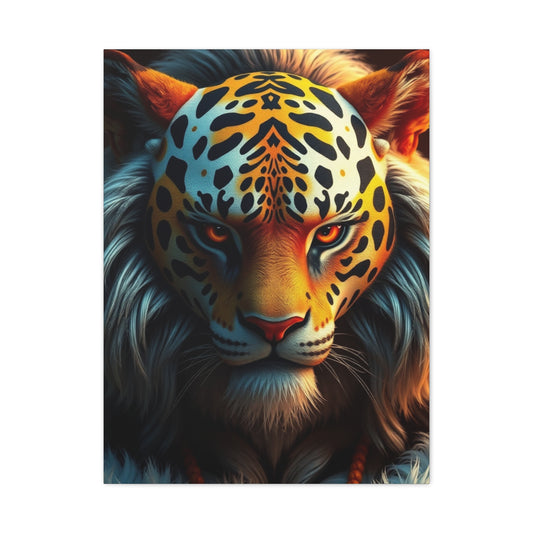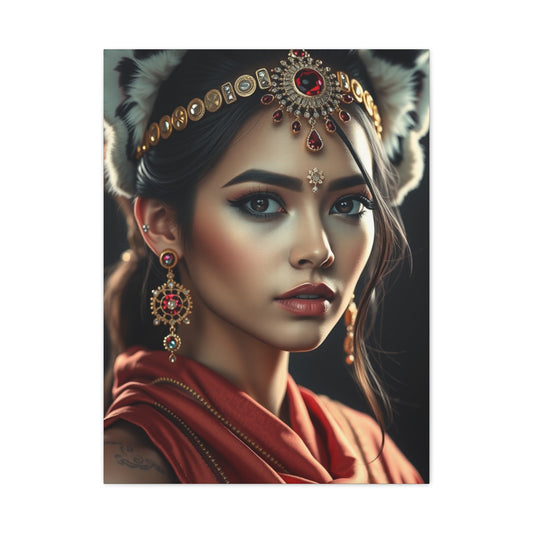Decorating with Ettavee: Contemporary Canvas and Wall Art Inspirations
Ettavee’s distinctive approach to wall art emphasizes the balance between modern artistic techniques and the intimate resonance of personal expression. Each piece embodies a deliberate interplay of color, texture, and form, creating visual experiences that captivate the observer while enhancing the ambiance of any room. The dynamic compositions present in Ettavee canvases allow for layers of interpretation, offering both immediate aesthetic pleasure and contemplative engagement for viewers seeking deeper connections with their interior spaces.
One of the defining strengths of Ettavee wall prints is their remarkable versatility. Their aesthetic adaptability allows them to harmonize effortlessly with a variety of interior design styles. In minimalist or Scandinavian-inspired homes, Ettavee’s clean lines, subtle textures, and refined color palettes contribute to an atmosphere of calm and understated elegance. Conversely, in maximalist or eclectic settings, bold compositions and vibrant hues create focal points that energize spaces and provoke thoughtful dialogue between design elements. This flexibility ensures that Ettavee canvases are not merely decorative objects but integral components of a cohesive design narrative.
Ettavee’s commitment to technical excellence further distinguishes these pieces within the realm of contemporary décor. Utilizing premium canvas substrates and state-of-the-art printing technologies, each work maintains fidelity to the artist’s original vision while ensuring longevity and durability. Archival-grade inks and protective coatings preserve color vibrancy and surface integrity, allowing these artworks to remain visually striking for years to come. Such attention to material quality reinforces the investment value of Ettavee canvases, making them desirable acquisitions for both interior designers and discerning homeowners alike.
Beyond visual appeal, Ettavee wall art fosters emotional and cultural engagement within living spaces. Many pieces draw inspiration from urban landscapes, abstract forms, and natural motifs, translating complex experiences and narratives into visual form. By incorporating these elements into home décor, individuals can create environments that resonate with their personal histories, aspirations, and aesthetic philosophies. This capacity for storytelling through artistic expression is a hallmark of Ettavee’s contemporary approach, inviting viewers to interact meaningfully with the spaces they inhabit.
Successful integration of Ettavee canvases involves thoughtful consideration of scale, placement, and complementary design elements. Large-format pieces can anchor living rooms or entryways, providing dominant visual statements, while smaller works function effectively as accent pieces, adding layers of intrigue and sophistication. Lighting choices, wall colors, and surrounding furnishings should be curated to enhance the visual impact of these artworks, ensuring that each piece achieves its full potential as a centerpiece within the home.
Design Philosophy Behind Ettavee Artistic Creations
The foundational philosophy underlying Ettavee wall style encompasses a revolutionary approach to residential and commercial space enhancement. This methodology transcends superficial decorative applications, instead focusing on creating immersive environments that stimulate emotional responses and facilitate meaningful connections between inhabitants and their surroundings. The artistic vision behind these creations draws inspiration from diverse cultural influences, contemporary art movements, and innovative design techniques that challenge conventional perceptions of wall décor.
Contemporary design enthusiasts gravitate toward Ettavee abstract prints precisely because these pieces embody a sophisticated understanding of color theory, compositional balance, and spatial relationships. Each creation undergoes meticulous development processes that consider psychological impacts of visual elements, ensuring that the final products contribute positively to the overall ambiance and functionality of interior spaces. The artistic integrity maintained throughout the creation process distinguishes these pieces from mass-produced alternatives, offering discerning consumers access to genuinely unique decorative solutions.
The conceptual framework governing vibrant Ettavee designs incorporates extensive research into contemporary lifestyle preferences, architectural trends, and evolving aesthetic sensibilities. This comprehensive approach ensures that each piece remains relevant and appealing across extended timeframes, providing long-term value for consumers who invest in quality artistic expressions. The design philosophy emphasizes sustainability, durability, and timeless appeal while maintaining accessibility for diverse consumer demographics and budget considerations.
At the heart of Ettavee’s artistic philosophy is the belief that wall art should evoke more than visual admiration—it should inspire emotional resonance and personal reflection. Each composition is carefully crafted to engage viewers on multiple sensory and cognitive levels, fostering a sense of connection between the artwork, its environment, and the individuals inhabiting the space. By integrating narrative elements, symbolic motifs, and dynamic visual contrasts, Ettavee designs encourage viewers to interact with their surroundings more thoughtfully, transforming walls into immersive experiences rather than passive décor.
Harmony of Form, Color, and Space
Ettavee’s abstract prints exemplify the brand’s sophisticated understanding of formal artistic principles. The interplay of color theory, compositional balance, and spatial dynamics is central to their design process, ensuring that each piece complements and enhances the surrounding environment. By strategically employing contrast, gradient transitions, and geometric or organic motifs, Ettavee works create focal points that guide the eye and generate a sense of visual equilibrium. This deliberate attention to harmony allows even bold or vibrant designs to integrate seamlessly into diverse interior aesthetics, from minimalist modern spaces to eclectic, layered interiors.
The inspiration behind Ettavee’s creations spans a broad spectrum of cultural, historical, and contemporary influences. From global art movements such as abstract expressionism and modern minimalism to architectural motifs and nature-inspired textures, these influences converge to form pieces that feel both innovative and timeless. This synthesis of ideas ensures that Ettavee wall art not only resonates aesthetically but also carries a subtle intellectual and cultural depth, inviting viewers to engage with the work on multiple levels beyond surface beauty.
A key tenet of Ettavee’s design philosophy is sustainability. Materials are carefully selected for durability and environmental responsibility, while production processes emphasize archival-quality inks, premium canvas substrates, and protective coatings. This commitment ensures that Ettavee artworks maintain their visual integrity over years of display, offering consumers long-term value while supporting ethical and eco-conscious practices. By combining aesthetic sophistication with sustainable practices, Ettavee bridges the gap between responsible consumption and elevated interior design.
Ettavee designs also prioritize accessibility, ensuring that exceptional artistic experiences are available to a wide range of consumers. By balancing creativity, technical quality, and affordability, Ettavee provides options for both seasoned collectors and first-time buyers seeking impactful yet approachable wall décor. The focus on timeless visual principles further ensures that these pieces remain relevant and appealing as design trends evolve, making them enduring investments for personal and professional interiors alike.
Analysis of Modern Ettavee Wall Style
Modern interior design applications for Ettavee canvas décor extend far beyond traditional hanging artwork, encompassing innovative installation methods and creative arrangement strategies that maximize visual impact while optimizing spatial utilization. Professional interior designers frequently incorporate these pieces as focal points within larger decorative schemes, utilizing their inherent versatility to create cohesive design narratives that enhance overall environmental aesthetics.
The strategic placement of colorful Ettavee art within residential spaces requires careful consideration of lighting conditions, architectural features, and existing decorative elements. Successful implementations often involve creating deliberate contrast or harmony with surrounding design components, depending on the desired emotional and visual outcomes. The sophisticated color palettes characteristic of these pieces facilitate seamless integration with diverse interior design schemes while maintaining their distinctive artistic character.
Commercial applications for bold Ettavee artwork have gained significant traction across various industries, including hospitality, healthcare, corporate environments, and retail spaces. The professional quality and contemporary aesthetic appeal of these pieces make them particularly suitable for environments where visual impact and brand representation intersect. The ability to customize certain aspects of these artworks allows businesses to maintain brand consistency while incorporating high-quality artistic elements into their spatial design strategies.
Residential installation considerations for artistic Ettavee canvas pieces involve multiple factors, including room dimensions, ceiling heights, furniture arrangements, and natural lighting patterns. Optimal placement strategies often incorporate principles of visual balance, proportion, and emphasis to create harmonious environments that feel both sophisticated and welcoming. The versatility of these pieces allows for various installation approaches, from single statement pieces to coordinated gallery walls that tell comprehensive visual stories.
Exploring the Diverse Spectrum of Vibrant Ettavee Designs
The extensive catalog of vibrant Ettavee designs encompasses an remarkable array of artistic styles, color schemes, and compositional approaches that cater to diverse aesthetic preferences and interior design requirements. From subtle monochromatic compositions to bold, multi-chromatic expressions, these creations offer unprecedented flexibility for homeowners seeking to personalize their living environments while maintaining professional design standards.
Abstract expressionist influences permeate many contemporary Ettavee prints, reflecting ongoing artistic movements that prioritize emotional expression over literal representation. These pieces often feature dynamic brushwork, unexpected color combinations, and compositional elements that invite contemplation and interpretation. The abstract nature of many designs ensures their compatibility with various decorative themes while providing opportunities for personal interpretation and emotional connection.
Geometric patterns and structured compositions represent another significant category within the Ettavee collection, appealing to consumers who prefer more structured and predictable visual elements. These designs often incorporate mathematical principles, symmetrical arrangements, and carefully calibrated color relationships that create sense of order and stability within interior environments. The precision inherent in geometric designs makes them particularly suitable for contemporary and minimalist interior design schemes.
Nature-inspired motifs constitute a substantial portion of stylish Ettavee décor offerings, reflecting widespread consumer preferences for biophilic design elements that connect interior spaces with natural environments. These pieces often feature organic forms, natural color palettes, and compositional elements that evoke landscapes, botanical specimens, or atmospheric phenomena. The calming psychological effects associated with nature-inspired artwork make these pieces particularly appropriate for residential applications, especially in bedrooms, living areas, and wellness-focused spaces.
Contemporary interpretations of traditional artistic themes represent an innovative approach within the Ettavee portfolio, combining classical compositional principles with modern aesthetic sensibilities and production techniques. These hybrid creations appeal to consumers who appreciate historical artistic traditions while desiring contemporary relevance and visual freshness. The successful integration of traditional and contemporary elements requires sophisticated artistic understanding and technical expertise.
Elevating Wall Art Beyond Decoration
At the core of Ettavee’s artistic philosophy is the belief that wall art should transcend mere visual appeal—it should evoke emotion and spark personal reflection. Each piece is thoughtfully crafted to engage viewers on multiple sensory and intellectual levels, creating a meaningful connection between the artwork, its surroundings, and those experiencing it. By weaving together narrative elements, symbolic motifs, and striking visual contrasts, Ettavee encourages audiences to engage more deeply with their environment, transforming walls into immersive, thought-provoking experiences rather than passive backdrops.
Ettavee’s abstract prints reflect a sophisticated mastery of artistic principles. Their designs carefully balance color theory, compositional structure, and spatial dynamics, ensuring each artwork enhances and complements its environment. Through the strategic use of contrast, gradient transitions, and both geometric and organic patterns, Ettavee creates focal points that guide the viewer’s eye and establish visual harmony. This intentional approach allows even bold and vibrant designs to integrate seamlessly into diverse interior styles, from minimalist modern spaces to eclectic, layered settings.
Ettavee draws inspiration from a rich array of cultural, historical, and contemporary sources. Influences range from abstract expressionism and modern minimalism to architectural forms and nature-inspired textures, merging to produce works that feel both innovative and timeless. This fusion of ideas ensures that each piece resonates aesthetically while offering subtle layers of intellectual and cultural depth, inviting viewers to engage with the art on levels far beyond its surface beauty.
Sustainability is a guiding principle in Ettavee’s design approach. Materials are carefully chosen for durability and eco-consciousness, while production emphasizes archival-quality inks, premium canvas substrates, and protective coatings. These practices guarantee that Ettavee artworks maintain their vibrancy and structural integrity over years of display, providing lasting value while supporting environmentally responsible practices. By combining aesthetic sophistication with sustainability, Ettavee offers art that is both elegant and ethically mindful.
Ettavee strives to make exceptional art accessible to a wide audience. By harmonizing creativity, technical excellence, and affordability, the brand caters to both seasoned collectors and first-time buyers seeking striking, approachable wall décor. Their focus on timeless design principles ensures that each piece remains relevant and captivating as trends shift, making Ettavee wall art an enduring investment for both personal and professional spaces.
Strategic Integration of Bright Ettavee Canvas Art in Interior Design
The successful integration of bright Ettavee canvas art within interior design schemes requires sophisticated understanding of color theory, spatial relationships, and psychological impacts of visual elements. Professional designers utilize these pieces as foundational elements around which entire decorative schemes develop, recognizing their potential to establish mood, define spatial character, and create memorable visual experiences.
Color coordination strategies for incorporating vibrant artwork into existing décor involve careful analysis of dominant hues, undertones, and complementary relationships that enhance overall environmental harmony. Successful implementations often utilize the artwork as inspiration for broader color palette development, incorporating accent colors, fabric selections, and accessory choices that create cohesive and visually appealing results. The sophisticated color relationships inherent in quality artwork provide reliable foundations for comprehensive interior design development.
Lighting considerations play crucial roles in optimizing the visual impact of artistic installations, with both natural and artificial lighting sources contributing to the overall effectiveness of wall art presentations. Professional lighting design techniques can enhance color vibrancy, create dramatic shadows, and establish focal points that draw attention to particularly significant pieces. The interaction between lighting and artwork creates dynamic visual experiences that change throughout the day and across different seasons.
Scale and proportion relationships between artwork and surrounding architectural elements require careful consideration to achieve visually balanced and aesthetically pleasing results. Oversized pieces can create dramatic focal points and establish commanding presence within large spaces, while smaller works might be more appropriate for intimate settings or gallery wall arrangements. Understanding these relationships enables optimal placement decisions that maximize visual impact while maintaining environmental harmony.
Innovation in Unique Ettavee Wall Décor
Innovative applications for unique Ettavee wall décor extend beyond traditional hanging installations to encompass creative mounting techniques, unconventional placement strategies, and integration with architectural features that enhance both artistic and functional aspects of interior environments. These alternative approaches reflect evolving consumer preferences for personalized and distinctive decorative solutions that distinguish individual spaces from conventional design approaches.
Modular installation systems enable flexible arrangement possibilities that accommodate changing preferences, seasonal variations, and evolving spatial requirements. These systems often incorporate standardized mounting hardware and coordinated design elements that facilitate easy reconfiguration while maintaining visual coherence. The flexibility inherent in modular approaches appeals to consumers who enjoy periodically refreshing their interior environments without substantial financial investment.
Three-dimensional presentation techniques transform traditional flat artwork into sculptural elements that engage viewers from multiple perspectives and create more immersive visual experiences. These approaches might involve layered mounting systems, strategic lighting integration, or combination with complementary three-dimensional elements that enhance the overall artistic impact. The evolution toward more dimensional presentations reflects broader trends in contemporary interior design that emphasize tactile and sensory engagement.
Digital integration possibilities represent emerging opportunities for combining traditional artwork with technological enhancements that create interactive or changeable visual experiences. These innovations might incorporate programmable lighting systems, digital display elements, or smart home integration that allows for dynamic customization based on time, weather, or personal preferences. The convergence of traditional artistic expression with contemporary technology creates unprecedented possibilities for personalized environmental design.
Ettavee Collection Pieces
The broader cultural significance of Ettavee collection pieces reflects contemporary society's evolving relationship with artistic expression, personal identity, and environmental customization. These artworks serve as vehicles for self-expression while contributing to larger conversations about aesthetic value, cultural representation, and the democratization of artistic access within domestic and commercial environments.
Psychological research demonstrates significant correlations between environmental aesthetics and mental well-being, with quality artwork contributing to stress reduction, creativity enhancement, and overall life satisfaction. The careful design considerations inherent in Ettavee pieces optimize these beneficial effects by incorporating color relationships, compositional elements, and visual rhythms that promote positive emotional responses and environmental comfort.
Social implications of artistic choices within personal and professional spaces reflect individual values, cultural affiliations, and aesthetic preferences that communicate important information about occupants to visitors and colleagues. The sophisticated design language employed in these pieces enables subtle yet meaningful communication of taste, education, and cultural awareness that contributes to personal and professional reputation development.
Educational value inherent in exposure to quality artistic expressions contributes to aesthetic development, cultural literacy, and appreciation for visual arts that extend beyond immediate decorative applications. The accessibility of these pieces enables broader demographic engagement with contemporary artistic movements and design principles that might otherwise remain confined to traditional gallery or museum contexts.
Market Trends and Consumer Preferences in Contemporary Wall Art
Current market trends in contemporary wall art reflect significant shifts toward personalization, sustainability, and technological integration that influence both production methodologies and consumer purchasing decisions. These evolving preferences create opportunities for innovative approaches to artistic creation, distribution, and customer engagement that distinguish quality providers from conventional alternatives.
Demographic analysis reveals distinct preferences across different age groups, income levels, and geographic regions that inform product development and marketing strategies. Younger consumers often prioritize bold, contemporary designs that reflect current cultural movements, while older demographics might prefer more traditional or nature-inspired themes that emphasize timeless appeal and environmental harmony. Understanding these preferences enables more targeted product development and customer service approaches.
Sustainability concerns increasingly influence consumer purchasing decisions, with environmentally conscious buyers seeking products that minimize ecological impact through responsible material sourcing, efficient production processes, and durable construction that reduces replacement frequency. The implementation of sustainable practices throughout the production chain appeals to growing market segments while contributing to broader environmental responsibility goals.
Digital commerce trends significantly impact how consumers discover, evaluate, and purchase wall art, with online platforms providing unprecedented access to diverse artistic options while creating challenges for accurate color representation and scale visualization. Successful digital marketing strategies must address these limitations through high-quality photography, detailed product descriptions, and comprehensive customer service support that facilitates confident purchasing decisions.
Professional Installation and Maintenance Guidelines
Professional installation practices for wall-mounted artwork require careful attention to structural considerations, mounting hardware selection, and positioning techniques that ensure both security and optimal visual presentation. These procedures vary significantly based on wall construction, artwork size, and environmental conditions that might affect long-term stability and appearance.
Wall preparation procedures encompass assessment of structural integrity, identification of suitable mounting points, and consideration of electrical or plumbing systems that might be affected by installation activities. Different wall construction types require specific hardware and techniques to ensure secure mounting while minimizing damage to architectural features. Professional installers utilize specialized tools and techniques to achieve precise positioning and secure attachment.
Environmental considerations for artwork placement include evaluation of humidity levels, temperature fluctuations, direct sunlight exposure, and proximity to heating or cooling systems that might affect artwork longevity. Strategic positioning minimizes exposure to potentially damaging conditions while optimizing lighting and viewing angles for maximum visual impact. These considerations become particularly important for valuable or irreplaceable pieces.
Maintenance protocols for preserving artwork quality involve regular cleaning procedures, environmental monitoring, and periodic inspection for signs of deterioration or damage. Appropriate cleaning techniques vary based on substrate materials and printing methods, with some pieces requiring only gentle dusting while others might accommodate more thorough cleaning procedures. Understanding proper maintenance requirements helps ensure long-term preservation of artistic and financial value.
Economic Considerations and Investment Value
The economic aspects of wall art acquisition encompass both immediate purchase considerations and long-term value preservation that influence purchasing decisions across different consumer segments. Quality artwork often represents significant financial investments that require careful evaluation of artistic merit, market trends, and personal satisfaction factors that justify expenditure levels.
Price point analysis reveals substantial variation across different artistic categories, production methods, and distribution channels that affect accessibility for various consumer demographics. Limited edition pieces typically command premium pricing due to exclusivity factors, while open edition prints provide more affordable access to similar artistic content. Understanding these pricing structures enables informed purchasing decisions that align with budget constraints and value expectations.
Investment potential varies significantly across different types of wall art, with certain pieces appreciating in value over time while others primarily provide aesthetic rather than financial returns. Factors influencing long-term value include artist recognition, production quality, market demand, and rarity considerations that might affect future market valuation. While most consumers purchase artwork primarily for aesthetic enjoyment, understanding investment potential provides additional decision-making context.
Budget planning strategies for wall art acquisition often involve phased purchasing approaches that allow gradual development of comprehensive collections without excessive immediate financial burden. These strategies might prioritize key focal pieces initially, with subsequent additions complementing and enhancing the overall collection over time. Careful planning enables achievement of desired aesthetic goals while maintaining financial responsibility.
Regional and Cultural Variations
Geographic and cultural factors significantly influence aesthetic preferences for wall art, with regional traditions, climate considerations, and local design movements creating distinct market segments that require customized product offerings and marketing approaches. Understanding these variations enables more effective customer service and product development strategies.
Climate influences on interior design preferences affect color palette selection, with populations in sunny regions often gravitating toward cooler hues and subdued tones while those in cloudier climates might prefer warmer, more vibrant options. These preferences extend beyond simple color selection to encompass overall mood and energy levels conveyed by artistic choices.
Cultural heritage considerations play important roles in aesthetic preferences, with consumers often seeking artwork that reflects or complements their cultural backgrounds while maintaining compatibility with contemporary design trends. This balance between tradition and modernity creates opportunities for innovative artistic approaches that honor cultural values while embracing contemporary expression methods.
Urban versus rural preferences often reflect different lifestyle priorities and spatial considerations, with urban dwellers frequently preferring bold, contemporary pieces that make strong statements in smaller spaces, while rural consumers might favor larger, more traditional themes that complement natural surroundings and spacious environments.
Customization and Personalization Options
Contemporary consumers increasingly seek personalized decorative solutions that reflect individual preferences and unique spatial requirements. Customization options for wall art range from simple size adjustments to complete artistic commissions that create truly unique pieces tailored to specific applications and aesthetic preferences.
Size customization capabilities enable optimal fitting within diverse spatial contexts, from small accent pieces for intimate settings to large-scale installations for expansive commercial or residential applications. Flexible sizing options ensure that desired artwork can be adapted to available wall space while maintaining appropriate proportional relationships with surrounding elements.
Color modification services allow adjustment of existing designs to coordinate with specific color schemes or personal preferences while maintaining artistic integrity and visual coherence. These services require sophisticated understanding of color relationships and artistic composition to ensure successful modifications that enhance rather than compromise original designs.
Commission services for completely original artwork creation provide ultimate personalization options for consumers seeking unique pieces that cannot be obtained through conventional retail channels. These services typically involve collaborative design processes that incorporate client preferences, spatial requirements, and budget considerations into custom artistic solutions.
Seasonal and Trend-Based Design Considerations
Seasonal variations in interior design preferences create opportunities for rotating artwork selections that maintain environmental freshness while accommodating changing aesthetic preferences throughout the year. These approaches enable maximum utilization of artwork collections while providing ongoing visual interest and seasonal coordination.
Spring and summer preferences often gravitate toward lighter, more vibrant color palettes and nature-inspired themes that reflect seasonal energy and outdoor connection. These periods typically see increased interest in botanical subjects, landscape themes, and bright, optimistic color combinations that enhance natural lighting and complement warmer weather lifestyles.
Fall and winter preferences frequently shift toward warmer color palettes, more intimate compositions, and themes that emphasize comfort and introspection. These seasonal adjustments might involve transitioning from bright, energetic pieces to more subdued, contemplative options that coordinate with cozy interior arrangements and reduced natural lighting.
Trend awareness enables strategic purchasing decisions that maintain contemporary relevance while avoiding overly trendy selections that might quickly become dated. Successful trend integration involves identifying enduring elements within current movements while avoiding superficial stylistic features that lack lasting appeal.
Commercial Applications and Business Integration
Commercial applications for wall art encompass diverse business environments where aesthetic considerations intersect with brand representation, customer experience, and employee satisfaction objectives. These applications require careful consideration of durability, maintenance requirements, and visual impact that supports business goals while enhancing environmental quality.
Corporate environments increasingly recognize the importance of aesthetic quality in supporting employee satisfaction, productivity, and company culture development. Well-chosen artwork contributes to positive work environments while communicating company values and aesthetic sophistication to clients and visitors. The investment in quality decorative elements reflects organizational priorities and attention to detail.
Hospitality applications require artwork selections that appeal to diverse customer demographics while supporting overall brand identity and creating memorable experiences. Hotels, restaurants, and entertainment venues utilize wall art as integral components of comprehensive design strategies that differentiate their offerings and create distinctive atmospheric experiences.
Healthcare environments benefit from carefully selected artwork that promotes healing, reduces stress, and creates calming environments for patients and staff. Research demonstrates positive correlations between environmental aesthetics and patient outcomes, making thoughtful art selection an important component of comprehensive healthcare facility design.
Retail applications utilize wall art to create engaging shopping environments that encourage customer engagement, support brand messaging, and distinguish retail locations from competitors. Strategic artwork placement can guide customer flow, highlight specific product areas, and contribute to overall brand experience that influences purchasing decisions.
Maintenance, Preservation, and Longevity
Long-term preservation of wall art requires understanding of environmental factors, appropriate maintenance procedures, and preventive measures that ensure continued aesthetic and financial value over extended timeframes. These considerations become particularly important for valuable pieces that represent significant financial investments.
Environmental control measures include monitoring and managing humidity levels, temperature fluctuations, and air quality factors that might affect artwork longevity. Extreme environmental conditions can cause substrate deterioration, color fading, and structural damage that significantly impacts both appearance and value. Appropriate environmental management prevents many common forms of artwork deterioration.
Cleaning procedures vary significantly based on substrate materials, printing methods, and protective coatings that might be present on specific pieces. Some artwork requires only gentle dusting with appropriate tools, while others might accommodate more thorough cleaning procedures. Understanding proper cleaning techniques prevents damage while maintaining visual quality over time.
Protection from ultraviolet radiation represents a critical consideration for preventing color fading and substrate deterioration in artwork exposed to natural lighting. UV-filtering glazing, appropriate positioning away from direct sunlight, and specialized lighting systems help preserve color integrity while maintaining optimal viewing conditions.
Storage considerations become important for artwork that might be rotated seasonally or temporarily removed from display. Proper storage techniques involve climate-controlled environments, protective wrapping materials, and positioning that prevents physical damage or environmental exposure during storage periods.
Creative Arrangement and Gallery Wall Development
Gallery wall creation represents an advanced application of wall art that enables comprehensive artistic storytelling through coordinated arrangements of multiple pieces. These installations require sophisticated understanding of compositional principles, color relationships, and spatial design that creates cohesive visual narratives while maintaining individual piece integrity.
Planning procedures for gallery walls involve careful measurement, layout development, and arrangement strategies that optimize visual balance while accommodating specific spatial constraints. Paper templates enable experimentation with different arrangements before committing to final positioning, reducing installation errors and ensuring optimal results.
Spacing and proportion considerations require attention to both individual piece relationships and overall composition balance. Consistent spacing between pieces creates visual rhythm and coherence, while varied spacing can create emphasis and visual interest. Understanding these principles enables creation of dynamic yet harmonious arrangements.
Thematic coordination approaches might emphasize color relationships, subject matter connections, or stylistic consistency that creates unified visual experiences. Alternative approaches might deliberately incorporate contrast and variety to create more dynamic and engaging arrangements that maintain viewer interest through visual surprise and complexity.
Lighting design for gallery walls requires consideration of individual piece illumination while maintaining overall environmental lighting quality. Track lighting systems, picture lights, and strategic general lighting contribute to optimal viewing conditions while creating dramatic visual effects that enhance artistic impact.
Conclusion
The comprehensive exploration of Ettavee wall prints and contemporary canvas décor reveals a sophisticated ecosystem of artistic expression that transcends traditional decorative applications to encompass comprehensive environmental design solutions. These exceptional pieces represent far more than simple wall coverings; they constitute integral components of contemporary lifestyle design that influence mood, productivity, and overall quality of life within residential and commercial environments.
The evolution of modern interior design toward more personalized and expressive approaches has elevated the importance of quality wall art in creating distinctive and meaningful living spaces. Ettavee collections provide unprecedented access to professional-quality artistic expressions that enable homeowners and business operators to curate environments that authentically reflect individual preferences while maintaining sophisticated aesthetic standards. This democratization of artistic access represents a fundamental shift in how contemporary society approaches environmental customization and personal expression.
The technical excellence inherent in contemporary production methodologies ensures that these artistic investments provide long-term value through superior color accuracy, substrate quality, and durability that withstand environmental challenges while maintaining visual integrity over extended timeframes. The implementation of advanced printing technologies, premium materials, and comprehensive quality control procedures creates products that meet or exceed professional standards for artistic reproduction and commercial applications.
Cultural and psychological benefits associated with quality wall art extend beyond immediate aesthetic appreciation to encompass measurable improvements in mental well-being, creativity enhancement, and overall life satisfaction. The strategic incorporation of carefully selected artistic elements into daily environments creates positive psychological impacts that contribute to productivity, stress reduction, and enhanced quality of life across diverse demographic segments and application contexts.
The versatility inherent in modern wall art applications enables creative installations that accommodate diverse spatial requirements, design preferences, and functional objectives. From intimate residential settings to expansive commercial environments, these artistic solutions provide flexible and adaptable decorative options that enhance environmental quality while supporting broader design objectives. The ability to customize sizing, coordinate color schemes, and create thematic arrangements ensures compatibility with virtually any interior design application.
Market trends indicate continued growth in demand for personalized decorative solutions that reflect individual identity while maintaining contemporary relevance and professional quality standards. The integration of sustainable production practices, technological enhancements, and innovative distribution methods positions quality wall art providers to meet evolving consumer expectations while contributing to broader environmental and cultural objectives.
Educational and cultural benefits associated with regular exposure to quality artistic expressions contribute to aesthetic development, cultural literacy, and appreciation for visual arts that extend beyond immediate decorative applications. These broader impacts support personal development objectives while contributing to cultural enrichment and artistic appreciation across diverse community segments.
The economic considerations surrounding wall art acquisition encompass both immediate purchase decisions and long-term value preservation that influence consumer behavior and market development. Understanding these financial dynamics enables informed purchasing decisions that align aesthetic objectives with budget constraints while maximizing both immediate satisfaction and long-term value retention.
Future developments in wall art production, distribution, and application promise continued innovation through technological integration, customization expansion, and enhanced customer service capabilities. These advancing capabilities will further enhance accessibility while maintaining quality standards and artistic integrity that distinguish professional solutions from conventional alternatives.
The comprehensive integration of artistic elements into contemporary environmental design represents a fundamental acknowledgment of beauty's importance in daily life and its measurable impact on human well-being and productivity. Quality wall art serves as a bridge between personal expression and professional design standards, enabling individuals and organizations to create distinctive environments that support their objectives while contributing to broader cultural and aesthetic development.
Investment in quality wall art represents commitment to long-term environmental enhancement that provides ongoing returns through aesthetic enjoyment, psychological benefits, and potential financial appreciation. These multifaceted returns justify the initial investment while providing lasting satisfaction that extends far beyond immediate decorative applications.
The continuing evolution of wall art applications, production techniques, and consumer preferences ensures dynamic growth opportunities for both creators and consumers within this expanding market segment. Understanding these trends and opportunities enables strategic decision-making that maximizes benefits while minimizing risks associated with aesthetic investments and environmental design decisions.

